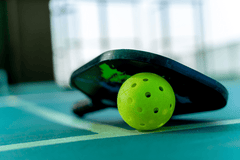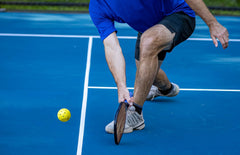As the popularity of pickleball continues to soar across America, players of all ages are hitting the courts with enthusiasm. However, like any sport, the fun of pickleball comes with the risk of injuries if proper precautions and conditioning are not taken seriously. This blog provides a comprehensive guide to physical training specifically tailored for pickleball players, aiming to enhance performance while minimizing the risk of injury.
Understanding the Physical Demands of Pickleball
Pickleball is a paddle sport that requires quick bursts of speed, agility, and strategic movements. While it's less impactful compared to traditional tennis, players still experience repetitive motions that can lead to overuse injuries. To prevent these, incorporating a conditioning routine that focuses on strength, flexibility, and endurance is crucial.
Core Strengthening Exercises
A strong core is the foundation for effective and safe movements in any sport, including pickleball. Core strength improves balance, reduces the risk of falls, and enhances the ability to hit the ball with power.
- Planks: Hold a plank position for 30 seconds to a minute, focusing on tightening your abdominal muscles.
- Russian Twists: Sit on the floor with your knees bent, lean back slightly, and twist your torso from side to side with or without a weight.
Lower Body Conditioning
Agility and quick footwork are essential in pickleball for reaching the ball and positioning oneself effectively. Strengthening the lower body can improve your speed and stability on the court.
- Squats: Regular squats or jump squats can strengthen the thighs, hips, and buttocks.
- Lunges: Forward, backward, and side lunges work on the leg muscles and improve balance.
Upper Body Workouts
Though pickleball is not as demanding on the upper body as other racquet sports, having strong shoulders, arms, and back can improve your paddle handling and shot power.
- Push-Ups: A classic exercise that strengthens the chest, shoulders, and triceps.
- Dumbbell Rows: This exercise targets the back and shoulders, improving your ability to swing the paddle with force.
Flexibility and Mobility Training
Flexibility and mobility are critical for preventing injuries by allowing the body to move freely and efficiently. Incorporating stretching and mobility exercises into your routine can also improve your range of motion, leading to better performance.
- Dynamic Stretching: Before playing, perform dynamic stretches such as leg swings and arm circles to warm up the muscles.
- Yoga or Pilates: Regular practice can significantly improve your flexibility, balance, and core strength.=
Cardiovascular Endurance
Pickleball games can last a while, requiring sustained energy and stamina. Cardio exercises not only improve your endurance but also your heart health.
- Running or Jogging: Builds stamina and leg strength. Even short runs can have significant benefits.
- Cycling or Swimming: Low-impact options for building cardiovascular health without stressing the joints.
Conclusion: A Holistic Approach to Training
Conditioning for pickleball should be a holistic endeavor, incorporating strength training, flexibility, and cardiovascular exercises. By dedicating time to a well-rounded physical conditioning routine, players can not only enhance their performance but also significantly reduce the risk of injury. Remember, the goal is to enjoy the game for years to come, and staying fit and injury-free is key to that enjoyment. Whether you're a beginner or an experienced player, integrating these exercises into your training regimen will ensure you're as prepared as possible for the physical demands of pickleball.













